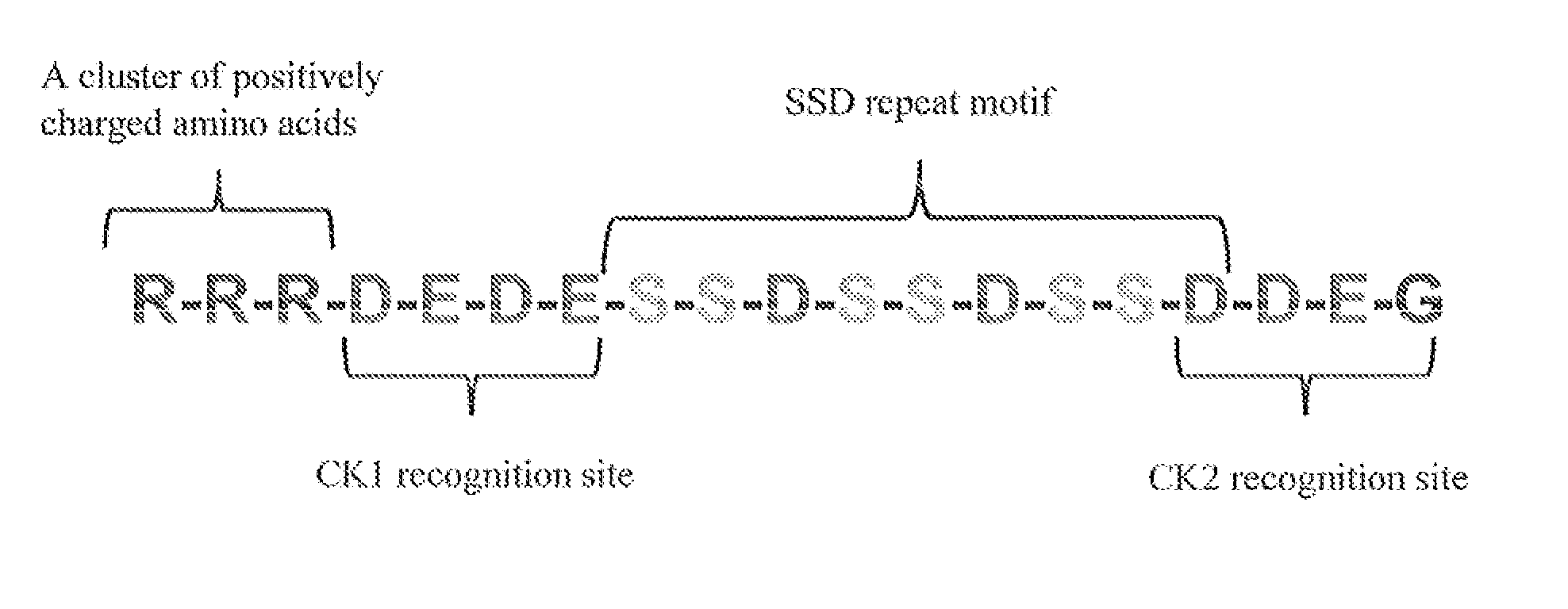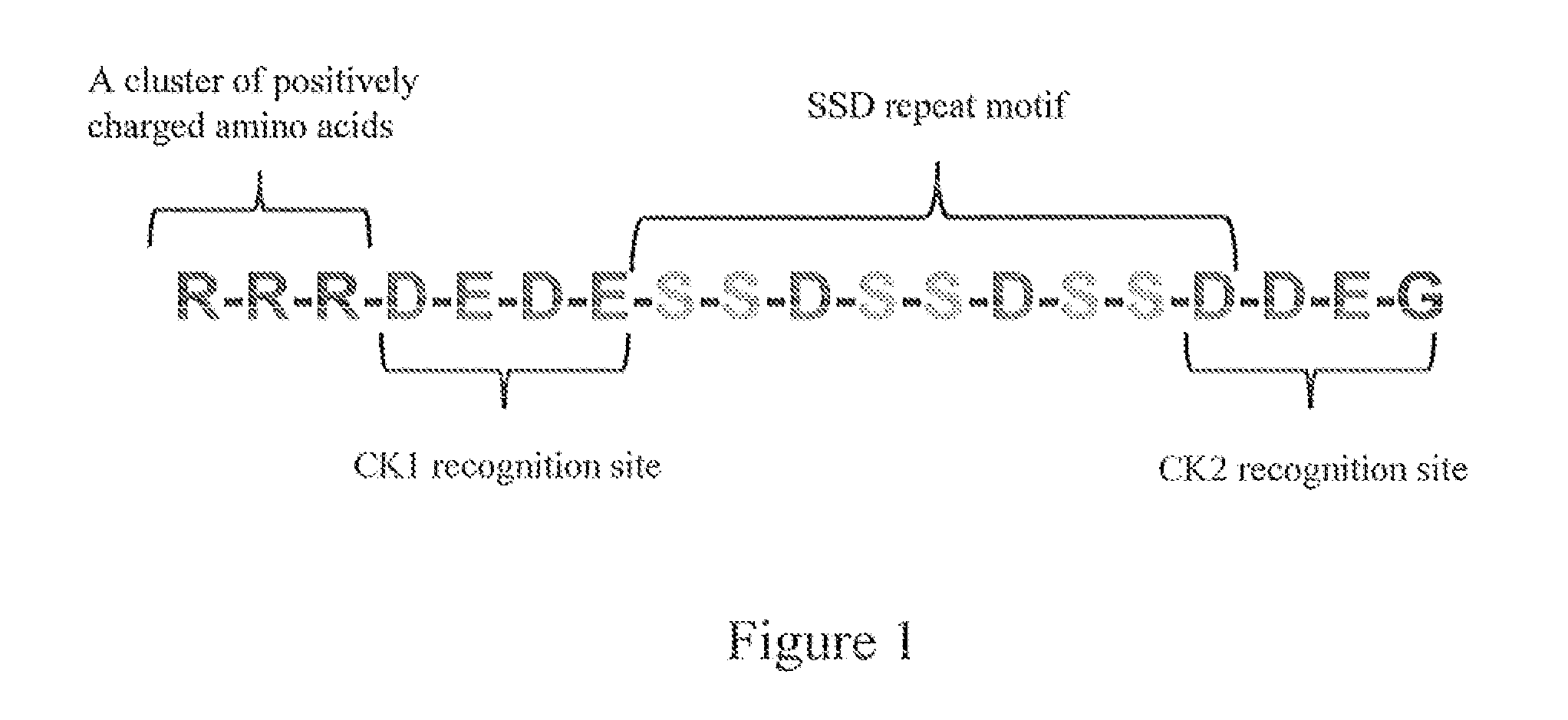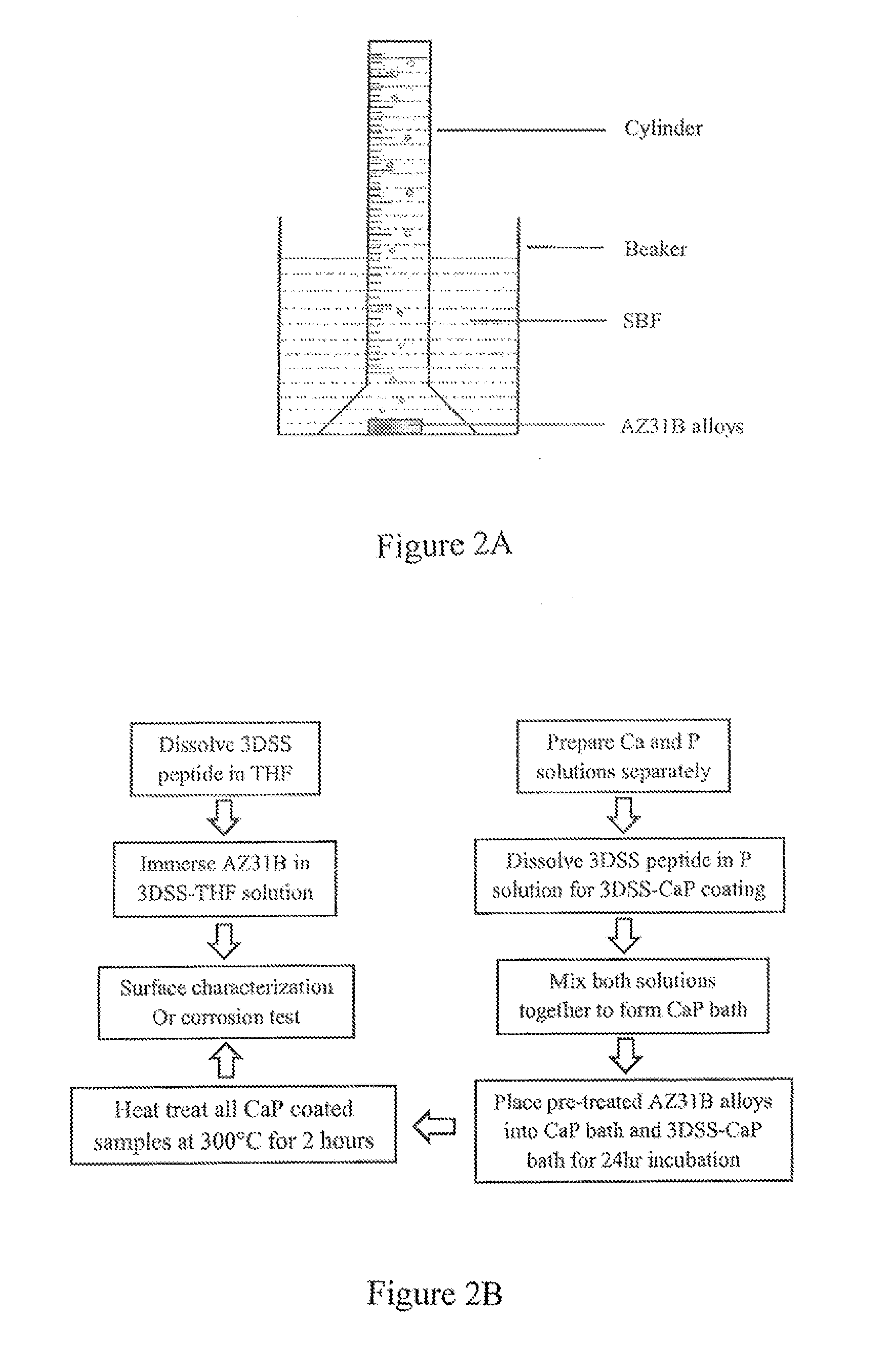Biomimetic coating of magnesium alloy for enhanced corrosion resistance and calcium phosphate deposition
a biomimetic coating and magnesium alloy technology, applied in the direction of prosthesis, peptide/protein ingredients, peptide sources, etc., can solve the problems of limited use of magnesium in medical applications, high cost, and high cost of magnesium alloy
- Summary
- Abstract
- Description
- Claims
- Application Information
AI Technical Summary
Benefits of technology
Problems solved by technology
Method used
Image
Examples
examples
[0054]The examples demonstrate the effectiveness of coating biomimetic peptides on magnesium (Mg) alloy AZ31B (96% magnesium, 3% aluminum, 1% zinc) and includes, examining the consequent reduction in corrosion rate in simulated body fluids (SBF), and assessing the ability of the biomimetic peptide to induce calcium phosphate precipitation on AZ31B alloys. The commercially-available (AZ31B) alloy was selected as a prototype substrate because it is a major, low-cost commercial Mg alloy and AZ31 implants were believed to have potential in facilitating new bone formation.
[0055]Mg Alloy Preparation
[0056]An AZ31B alloy (1 mm thick, Alfa Aesar) was used as the primary substrate material. Samples were cut to 10×10 mm2 squares, and then polished on both sides using 800 grit silicon carbide (SiC, Allied) papers to obtain homogeneous roughness. The final dimension of the finished substrate was 10×10×1 mm3. Before experimentation, all samples were ultrasonically cleaned in 100% acetone for 10 m...
PUM
| Property | Measurement | Unit |
|---|---|---|
| pH | aaaaa | aaaaa |
| thick | aaaaa | aaaaa |
| concentration | aaaaa | aaaaa |
Abstract
Description
Claims
Application Information
 Login to View More
Login to View More - R&D
- Intellectual Property
- Life Sciences
- Materials
- Tech Scout
- Unparalleled Data Quality
- Higher Quality Content
- 60% Fewer Hallucinations
Browse by: Latest US Patents, China's latest patents, Technical Efficacy Thesaurus, Application Domain, Technology Topic, Popular Technical Reports.
© 2025 PatSnap. All rights reserved.Legal|Privacy policy|Modern Slavery Act Transparency Statement|Sitemap|About US| Contact US: help@patsnap.com



